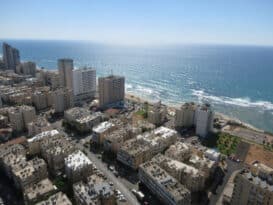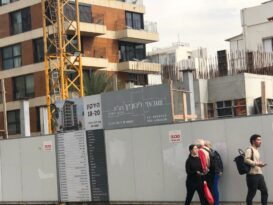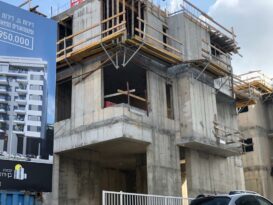An almost double increase in the number of residential real estate transactions, and a 236% jump in the volume of purchases made by investors, was recorded during October after the government publicized its intention to increase the purchase tax for investors. On the day of the official announcement, investors purchased 1,200 apartments compared to 150 on an average day. Home prices are now rising at an annual rate of more than 10%, for the first time since 2010.
The government’s intention to increase the purchase tax on investors led to a particularly large number of Israel real estate transactions for the purchase of apartments during October and November, with the majority of the increase recorded among those buying for investment purposes.
At the end of November, the new purchase tax (Mas Rechisha) rates came into effect, according to which the minimum Mas Rechisha on the purchase of an investment apartment is 8%, compared with 5% previously. Although the official announcement of the measure was made only during a press conference on the last day of October, the actual tax increase came into effect on 28 November 2011. Yet the press releases on the government’s intentions were sufficient to cause an 87% increase in the number of transactions that had already taken place in October, while the number of homes purchased for investment during the month jumped by 236%, according to data recently published by the Ministry of Finance.
A total of 14,400 apartments were purchased during October, of which 4,800 were bought for the purpose of investment. Both of these figures for real estate transactions are the highest recorded in the six-and-a-half years since June 2015, when the government increased the purchase tax for investors in Israel. The number of new apartments sold by the contractors during the month was 5,500 thousand apartments – the highest figure recorded since the figure began to be measured, around 20 years ago.
1,200 apartments sold in one day
An analysis of the distribution of investment purchases over the month between the initial news and the official notice of the tax hike found that in the first three weeks, investors purchased at a solid rate of 155 apartments per day on average, with no significant change between each week. However, in the fourth week as news of the impending tax increase intensified, there was a sharp increase that peaked on October 31, the day the Finance and Housing ministers held a press conference in which they officially announced the increased tax. On that day, investors purchased 1,186 apartments, a quarter of all apartments they purchased in the entire month of October.
In contrast to June 2015, when only two days passed between the finance minister’s announcement of a tax increase and the actual increase, this time the government lingered for four whole weeks until the actual tax increase was implemented on November 28. Indeed, according to the Treasury, preliminary data collected in November indicate an unusual level of real estate transactions in Israel, particularly in investor purchases. However, from November 28 onwards, the Treasury expects a “significant moderation” in investor acquisitions.
The most popular city for investor purchases in October was Tel Aviv, where 456 apartments were purchased for investment. Followed by Haifa (349 apartments), Bat-Yam (293 apartments), Beersheba (266), and Jerusalem. Although Tel Aviv was in the lead, the increase in the volume of investment purchases in the city during October was relatively modest at 56% compared to the average level from January to August 2021. While in Beersheba, where home prices are significantly lower, there was an increase of 169% compared to a normal month. In Bat Yam (148%) and Haifa (140%) there were sharp increases in the number of apartments purchased for investment, while in Jerusalem, there was a relatively modest increase of 45%.
Unsurprisingly, the wave of demand for apartments also affected the level of home prices, which has been on a steep rise since the second half of 2020. Indeed, the Home Price Index published last week by the Central Bureau of Statistics showed that in September–October there was a 0.9% increase compared to August-September and that in the past 12 months, home prices increased by 10%. This is the sharpest annual increase on record in the Israeli home market since 2010.
Divided into geographical areas, it was found that the sharpest increase occurred this year in the Jerusalem District, the two main cities of which are Jerusalem and Beit Shemesh. Home prices in this district increased by 11.5%. A similar increase of 11.2% occurred in the Central District, which includes the central part of the country, without Tel Aviv and Gush Dan, and whose largest cities are Rishon LeZion, Petah Tikva, Netanya, Rehovot, Kfar Saba, and Modi’in.
In the Haifa district and the Southern District, which includes Beersheba, Ashdod, and Ashkelon, there was a 9.9% increase, in the Tel Aviv district, which includes the cities of Gush Dan, there was an annual increase of 9%, and in the northern district, which includes Nazareth, Acre, Nahariya, and Afula, there was an increase of 8.6%.
Next month, when the Israel real estate transactions made in November are also weighed in, the Home Price Index will give a more realistic expression of the increase in home prices that has likely been caused by the huge wave of investor purchases during October-November. This is expected to reflect an even sharper rate of increase in prices than the current one, not great news for anyone looking to purchase an apartment in Israel in the near future.







